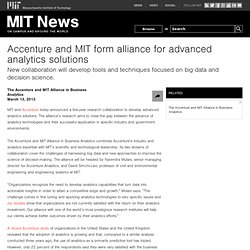

Analyzing, Interpreting and Reporting Basic Research Results. © Copyright Carter McNamara, MBA, PhD, Authenticity Consulting, LLC.

Adapted from the Field Guide to Nonprofit Program Design, Marketing and Evaluation and Field Guide to Consulting and Organizational Development. Sections of This Topic Include Analyzing and Interpreting InformationReporting ResultsWho Should Carry Out the Research? Contents of a Research Report -- An ExampleSome Pitfalls to Avoid General Information and Resources Ethics and Conducting Research Also see Related Library Topics Also See the Library's Blogs Related to Analyzing Research Results In addition to the articles on this current page, see the following blogs which have posts related to Analyzing Research Results.
Library's Business Planning Blog Library's Building a Business Blog Library's Strategic Planning Blog. 77 Business Tips For An Online Entrepreneur. I had an online business for 10 years. I made a successful exit a year ago and I still keep an active eye on the market. The following tips are actually pieces of my own experience, broken down in several areas: projects, strategy, team, money and partnerships. Feel free to add your own in the comments, if you feel like. Oh, and if you’re into big lists, you may also enjoy 100 Ways To Live A Better Life and 100 Ways To Improve Your Blog. Projects This is what you are actually doing, the results of your activities. 1. I can have 100 brilliant ideas per minute. 2. In the online business, what you are selling is not a product, nor even a service. 3.
One of the most accurate proofs that you’re doing a great job, is your clone trend. Accenture and MIT form alliance for advanced analytics solutions. MIT and Accenture today announced a five-year research collaboration to develop advanced analytics solutions.

The alliance’s research aims to close the gap between the advance of analytics technologies and their successful application in specific industry and government environments. The Accenture and MIT Alliance in Business Analytics combines Accenture's industry and analytics expertise with MIT's scientific and technological leadership. Its two streams of collaboration cover the challenges of harnessing big data and new approaches to improve the science of decision-making.
The alliance will be headed by Narendra Mulani, senior managing director for Accenture Analytics, and David Simchi-Levi, professor of civil and environmental engineering and engineering systems at MIT. “Organizations recognize the need to develop analytics capabilities that turn data into actionable insights in order to attain a competitive edge and growth,” Mulani says.
David C. Examples of projects include: Companies benefit from analytics. New research released today by MIT Sloan Management Review and SAS reports that 67 percent of companies surveyed are gaining a competitive advantage by using analytics — marking a 15 percent increase from last year and 80 percent increase from two years ago.

The report, "From Value to Vision: Reimagining the Possible with Data Analytics," derived from a global survey of more than 2,500 business executives, identifies a group of companies leading the way in the analytics revolution, dubbed "Analytical Innovators. " Companies in this category report both strong competitive advantage and improved innovation from using analytics, which are means of interpreting certain data to gain insight and drive business planning. Analytical Innovators are significantly more likely to exhibit three characteristics: a widely shared belief that data is a core asset; more effective use of more of their data for faster results; and support for analytics by executives.
Leo Sadovy - Strategic Workforce Planning. I have been privileged to have had the opportunity to contribute to the recently published, “Positioned – Strategic Workforce Planning that gets the Right Person in the Right Job”, co-edited by Rob Tripp, Workforce Planning Manager at Ford Motor Company.

The list of contributors is a Who’s Who of strategic workforce planning: Dave Ulrich, Jac Fitz-Enz and Tom Davenport among many others. Beginning with an historical perspective, it includes a major section on current best practices and concludes with a look at future directions. Sandwiched somewhere there in the middle is the chapter on Workforce Analytics that I co-wrote with my SAS colleague, Christian Haxholdt. Reproduced below is an excerpt of the opening paragraphs from this chapter, laying out the issue, and hinting at the business analytics that underpin SAS’ contribution to the solution.
As an HR executive, how do you feel about your ability to respond strategically to such requests? Information Graphic - The Analytical Advantage.